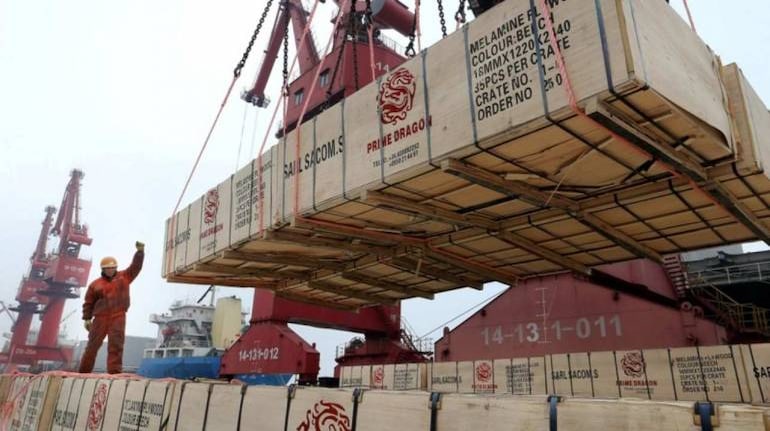



Making wagers is ill-advised for journalists, especially in hard times ravaged by a pandemic, because they cannot afford to lose. I have taken a wager with professional acquaintances in Washington that during the remainder of the Narendra Modi government’s current term, it will not conclude a trade agreement with the United States of America. This calendar period overlaps with all but a few months of the incoming Joe Biden administration.
There is absolutely no commonality in behavioural approach between the two sides towards negotiating any trade deal. When their attitude towards negotiations is as dissonant as chalk and cheese, there is little point in analysing or considering the mutual differences in policy between the US Trade Representative’s (USTR’s) office and the Ministry of Commerce in New Delhi.
India naively believes that by being nice to the US and mouthing pleasantries, a trade agreement with the US will follow. Historically, every USTR, since the position was created by the Trade Expansion Act of 1962 during the presidency of John F Kennedy, has been a hard nut to crack for successive governments in India, which have only had what passes for a comprehensive trade policy: it exists only in name.
Indian niceties and pleasantries have been recompensed by all USTRs with strong bargaining on behalf of Washington for their clearly defined goals. Usually inherent in such a US approach are minimalist and maximalist negotiating stands. Unfortunately, the two sides rarely reach those negotiating stages because of lack of clarity in successive commerce ministry briefs. I have come across more than one USTR, who tear their hair in frustration after talking to India.
A refreshing change, of plain speaking on the Indian side, was S Jaishankar in his original incarnation as a career diplomat. When Jaishankar arrived in Washington as Ambassador in 2013, the very first reception he was accorded was by the US-India Business Council (USIBC), which was the brainchild of Henry Kissinger, when he was Secretary of State under US President Gerald Ford.
Jaishankar’s remarks at the reception made jaws drop and left several top US CEOs shake their heads in disbelief. Some of them were signatories to a letter written to US President Barack Obama complaining about India from beginning to end and seeking presidential intervention because New Delhi’s policies, they alleged, were against free trade and in the way of better bilateral business.
Jaishankar told the guests, who collectively represented a net worth of trillions of dollars, that grievances are not a one-way affair. “We also have our concerns” about US policies, he said, and without jointly addressing them, trade cannot grow. Washington should correct its policies too, if progress on US-India economic issues is to be made.
Although he was Ambassador, commerce was under his jurisdiction only notionally. The point person on trade with the US — including dealings with the USTR — at the Indian embassy in Washington is from the Ministry of Commerce, which pays his/her salary. This officer with the rank of minister reports to the Commerce Secretary. Commerce is not Jaishankar’s portfolio now either.
A brilliant chapter on India’s ‘Politics of Trade Policy’ in the book Delusional Politics, begins with a quote in 1951 from Eugene Millikin, the US Senator from Colorado. “Anyone who reads the General Agreement on Tariffs and Trade (GATT) is likely to have his sanity impaired,” said the senator. The GATT and its successor, the World Trade Organisation, aim among other things, to raise standards of living and ensure full employment.
The author of Delusional Politics, a book about the future of global order, is Hardeep Singh Puri, now a minister in the Narendra Modi government. It is one of the few intellectual endeavours in this country which equates international trade policy with foreign and national security imperatives. Without doubt Puri asserts the primacy of trade policy only because he has rare experience among Indians as a member and chair of nine dispute settlement panels of the GATT and the WTO over a 15-year period.
The issue of a trade deal between India and the US has resurfaced now not only because the US presidency is in transition. Recently, Jaishnakar was asked in an interactive discussion if a US-India trade deal was “in the works.” In toto, the External Affairs Minister’s 395-word reply has all the ingredients of the way forward.
But then what about Piyush Goyal? The Commerce and Industry Minister says a limited trade pact with the US is only a few phone calls away. And that it will solve the bilateral issues that have accumulated over many years. If it is that simple why didn’t anyone make those few phone calls in the last four years of the Trump presidency?
When I was in Washington in the run up to Trump’s India visit, the USTR, Robert Lighthizer, was an angry man. That he cancelled his visit to India as Trump’s advance party is public knowledge. Privately, he accuses India of bad faith and of breaking promises. As the Biden administration takes charge, New Delhi’s way out is in putting trade policy in the hands of those who understand the subject and can articulate what matters. And in creating a cadre of specialist officers — like under the USTR — to man the 80-odd commerce ministry posts worldwide, like the one at the embassy in Washington, which are currently staffed by generalists, who start learning about commerce only after they are sent there.
But if that happens, I will lose my bet.
Discover the latest Business News, Sensex, and Nifty updates. Obtain Personal Finance insights, tax queries, and expert opinions on Moneycontrol or download the Moneycontrol App to stay updated!